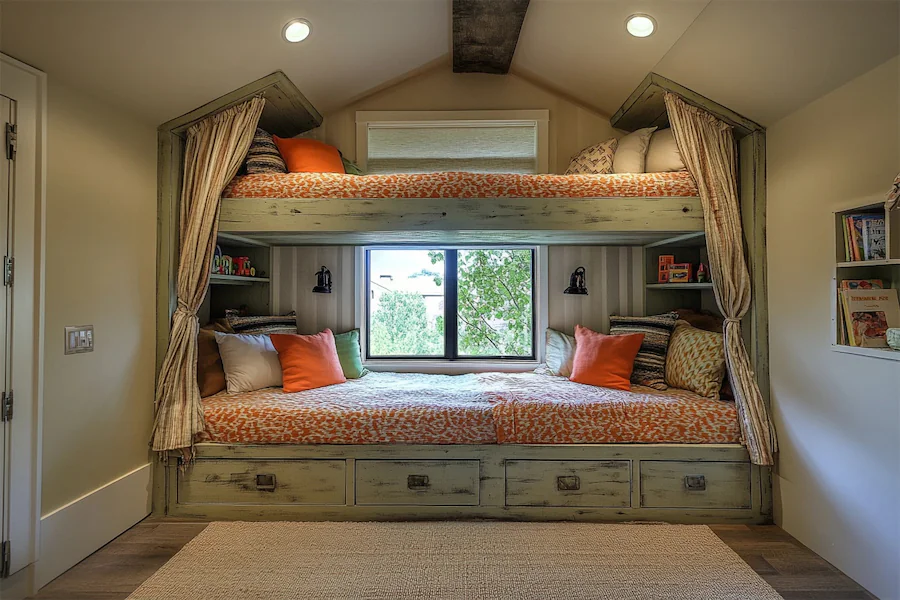Designing a compact kid’s room requires thoughtful planning to maximize space while ensuring the area remains functional, safe, and inviting. Here’s a comprehensive guide to achieving this:
Introduction to Compact Kid Rooms
A compact kid’s room is designed to make the most of limited space, providing areas for sleep, study, and play without feeling cramped. By incorporating smart storage solutions and multifunctional furniture, you can create a room that meets your child’s needs and adapts as they grow.
History and Origins of Compact Kid Rooms
The concept of compact kid rooms has evolved from the necessity of accommodating children’s needs in smaller living spaces, especially in urban environments. Over time, designers have developed innovative solutions to create functional and aesthetically pleasing rooms that maximize every square foot.
Key Features of Compact Kid Rooms
- Loft and Bunk Beds: Elevating the sleeping area frees up floor space for other uses, such as a study desk or play area underneath.
- Built-In Storage: Incorporating storage into furniture pieces, like beds with drawers or benches with hidden compartments, helps keep the room organized without occupying additional space.
- Vertical Utilization: Using wall-mounted shelves and organizers takes advantage of vertical space, keeping the floor area clear and making the room feel more open.
- Neutral and Light Colors: Opting for lighter shades on walls and furniture can make the room appear larger and more airy.
Applications of Compact Kid Rooms
- Shared Bedrooms: In rooms shared by siblings, using bunk beds and clearly defined personal spaces can help manage limited space effectively.
- Multi-Use Spaces: For homes where a single room serves multiple purposes, such as a bedroom and playroom, incorporating foldable or movable furniture allows for easy transitions between activities.
Considerations When Designing a Compact Kid Room
- Safety: Ensure all furniture is sturdy and secured to prevent tipping. Use non-toxic materials and avoid sharp edges to create a safe environment for your child.
- Personalization: Involve your child in the design process to incorporate their interests and preferences, making the space uniquely theirs.
- Flexibility: Choose furniture and decor that can adapt to your child’s changing needs and tastes over time, ensuring longevity in the room’s design.
Conclusion
Creating a compact kid’s room is about balancing functionality with personal expression. By thoughtfully selecting and arranging furniture, utilizing vertical space, and incorporating smart storage solutions, you can design a room that is both practical and delightful for your child.
